Parco Sempione is the green lung of the city center. Born originally as a hunting reserve of the noble families Visconti and Sforza it is also very rich in history: the majestic Castello Sforzesco stands at its back and, even further, the north entrance hosts one of the most important neoclassical monuments in Milan, Arco della Pace (Arch of Peace).
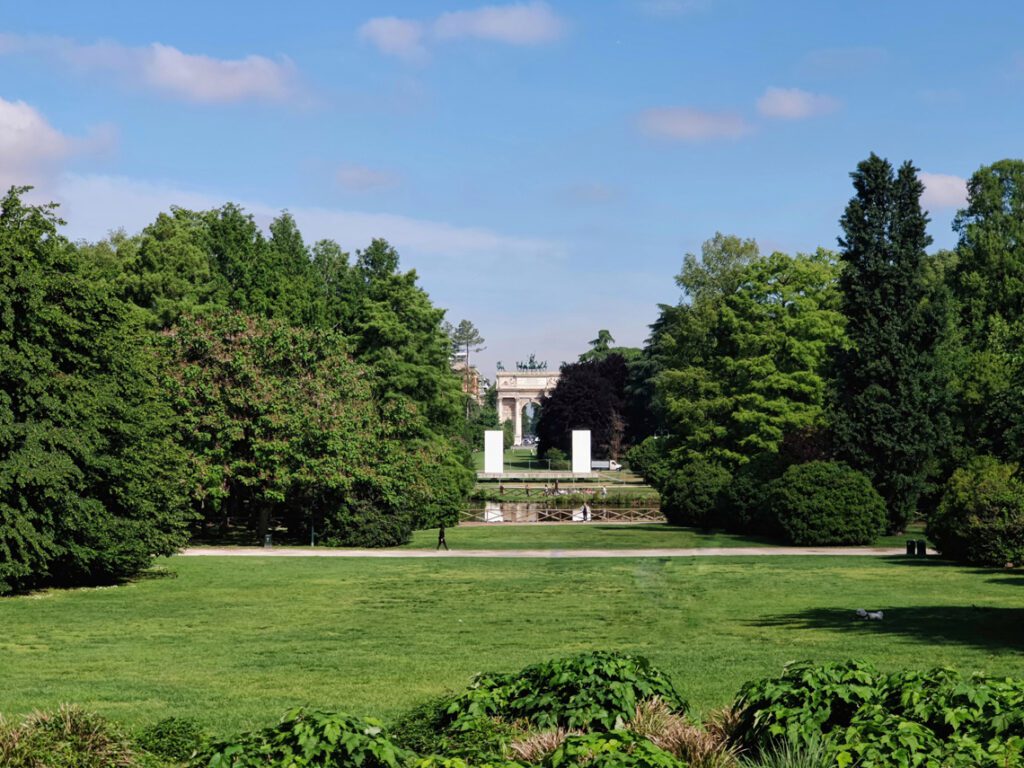
After the Unification of Italy, the use of area as a military zone ceased and between 1888 and 1894 Parco Sempione was redesigned by the architect Alemagna, who enriched it with a pond and footpaths in the style of a perfect English garden.
The most beautiful spots of Parco Sempione
Castello Sforzesco
The imposing Sforzesco Castle was built in the 15th century and had a long and eventful history: it has been home of dukes, rulers and even prisoners and its walls were witness to countless battles and sieges.
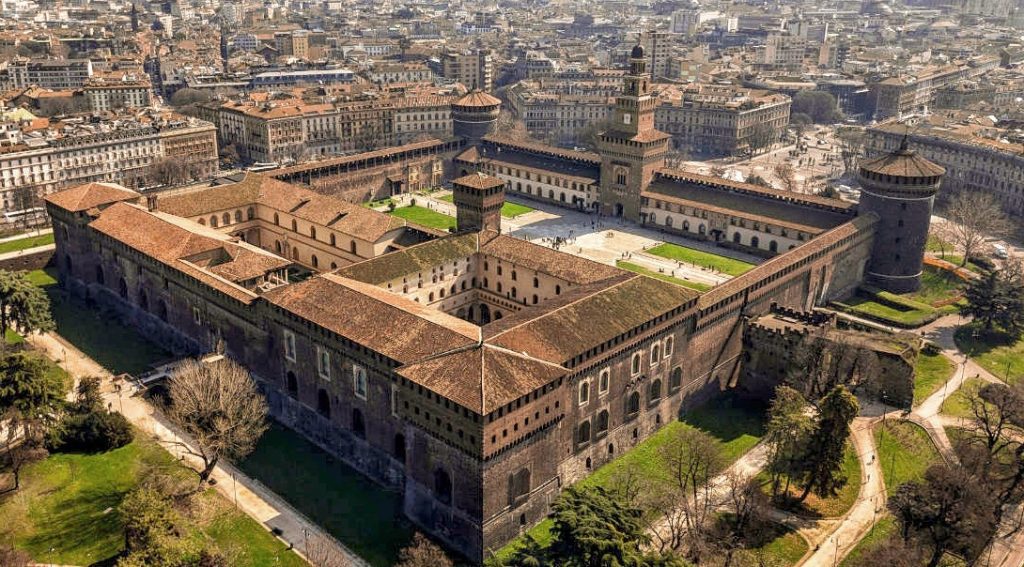
In addition to being an impressive enchanting fortification all admirable from the outside with its courtyards, gardens, towers and walls, it holds inside a numerous exhibition halls that make the castle a very important museum complex.
So, you find the Museum of Ancient Art, the Museum of Musical Instruments, the Prehistoric Museum, the Egyptian Museum and the Castle Art Gallery.
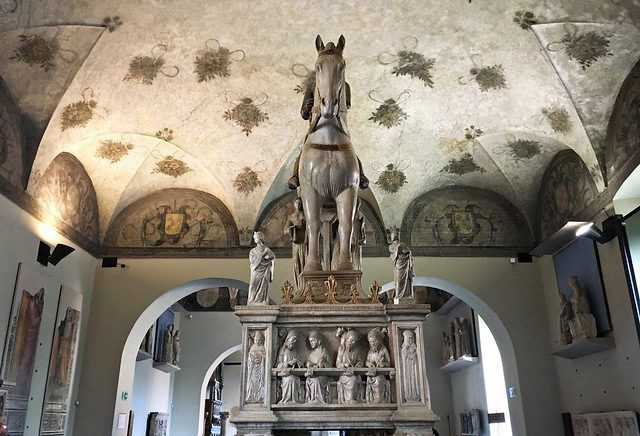
From 2015 the last masterpiece of Michelangelo, the sculpture Pietà Rondanini, can be found in the Spanish hospital side of the Castle. It is the last work created by the Tuscan artist, left unfinished.
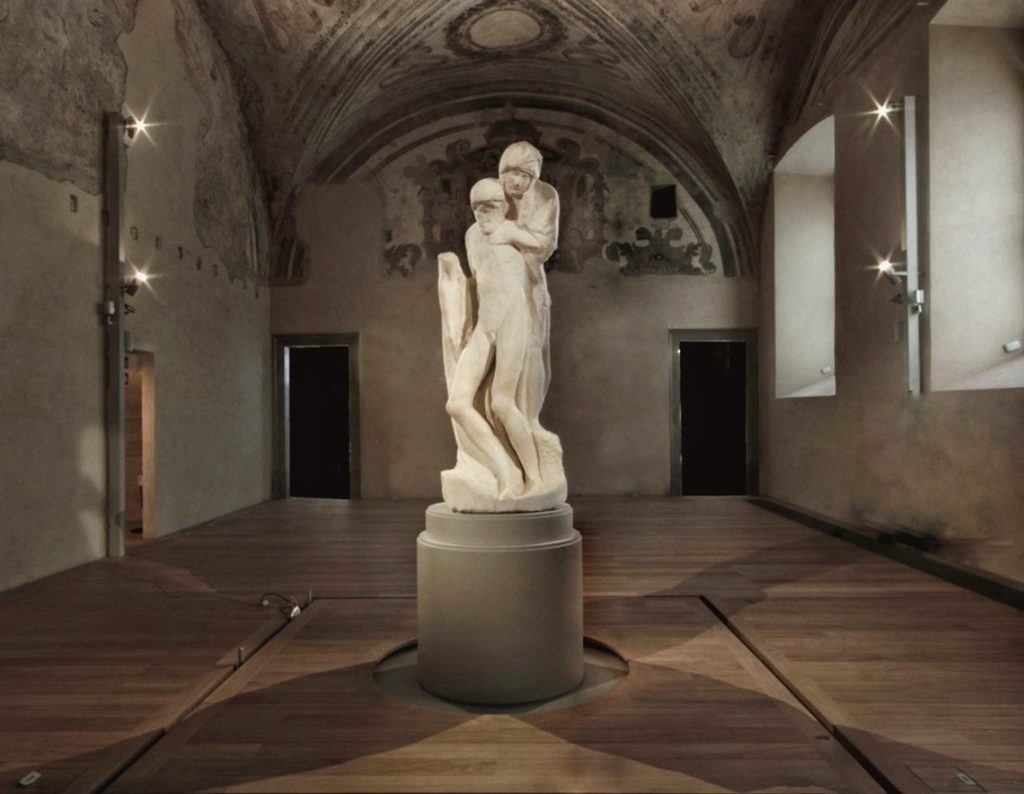
The fountain “Torta degli Sposi”
Just outside Parco Sempione, in front of the Castle, you will find a beautiful fountain composed of basins on different levels that form water features. Built in 1936 on the occasion of Mussolini’s visit to Milan to meet the war veterans who had returned home from Abyssinia, it was promptly named by the Milanese Torta degli Sposi for its shape resembling a wedding cake.
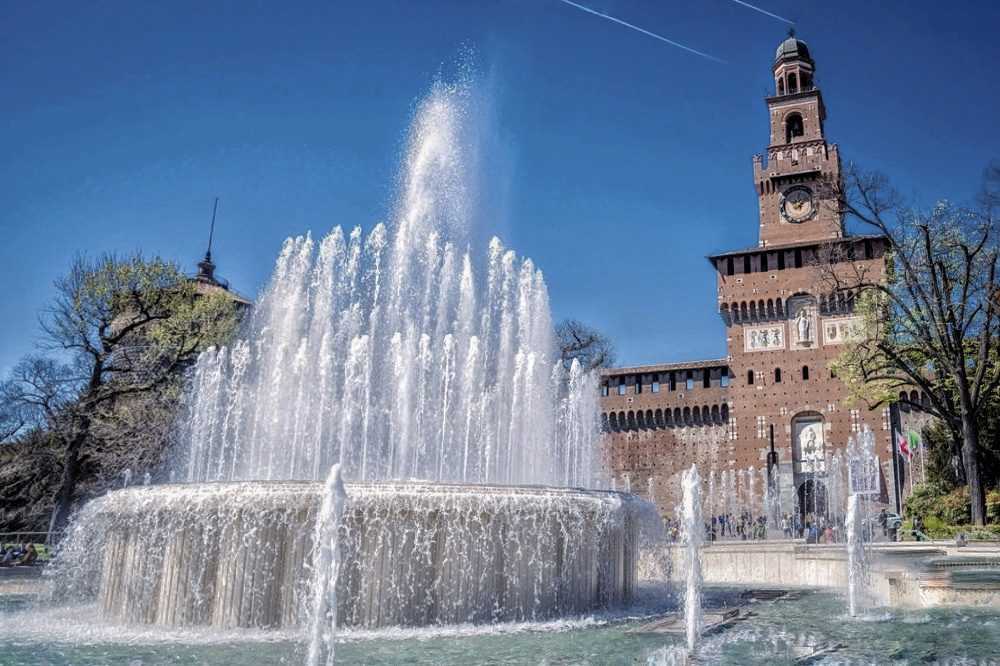
La Torre del Filarete
The gate of the main entrance of Sforzesco Castle is crowned by a tower which owes its name to the architect who designed it Antonio Averulino, also known as Filarete.
After being destroyed by a gunpowder explosion in 1521, the tower was rebuilt by the architect Luca Beltrami who inserted a clock, whose radiant sun motif was inspired by the Sforza coat of arms.
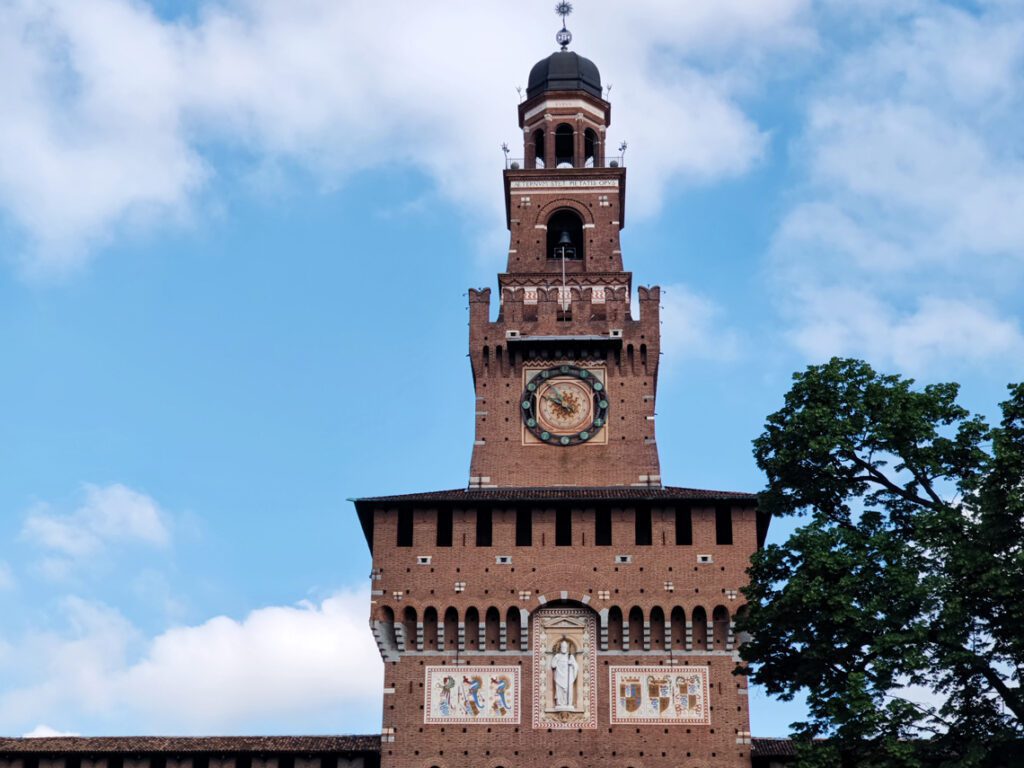
Cortile delle Armi
Entering from the tower, you reach the vast Courtyard of Arms extensively restored by the architect Luca Beltrami. On the side facing the Porta del Carmine you will find some stone sarcophagi of late Roman periods (III-IV century AD), fragments of statues and architectural remains.
La Corte Ducale
Here lived the Dukes. The “U” court on the north side of the castle area was purely residential, built in the fifteenth century and used in its original functions until Ludovico il Moro.
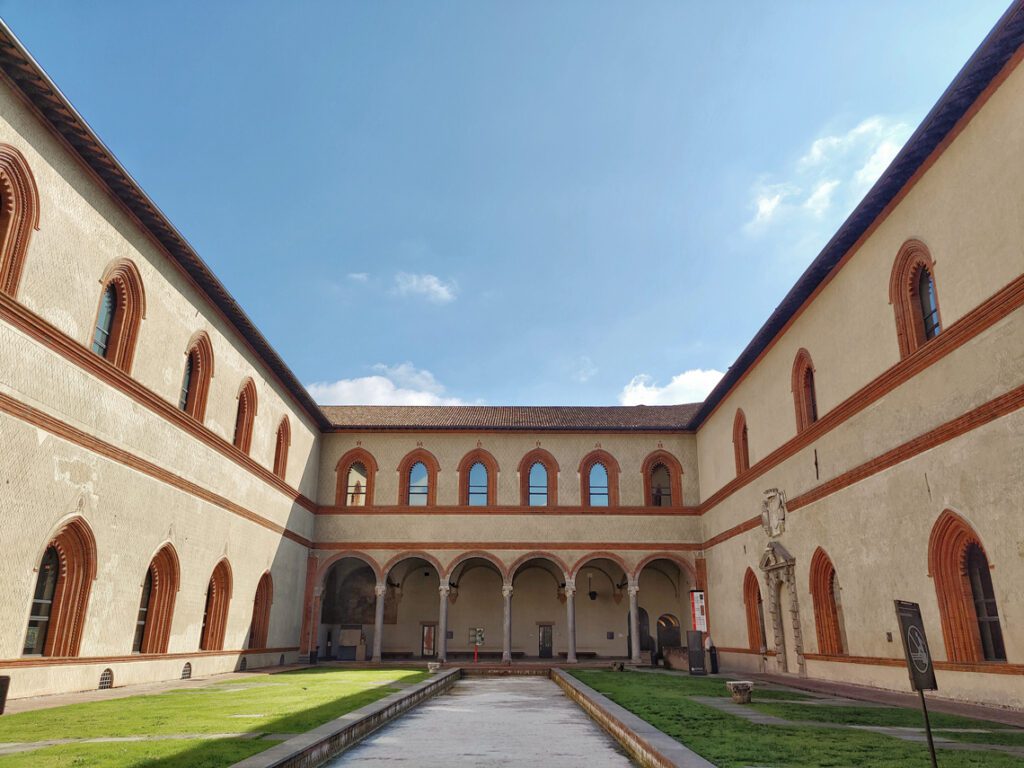
Still today you can admire some wonderful frescoes inside. One of the most famous is located below the Portico dell’Elefante, so called because it is frescoed with various images of wild animals including an elephant. The apartments of the residence were extended over two floors connected by low steps which allowed to climb the floors with horses.
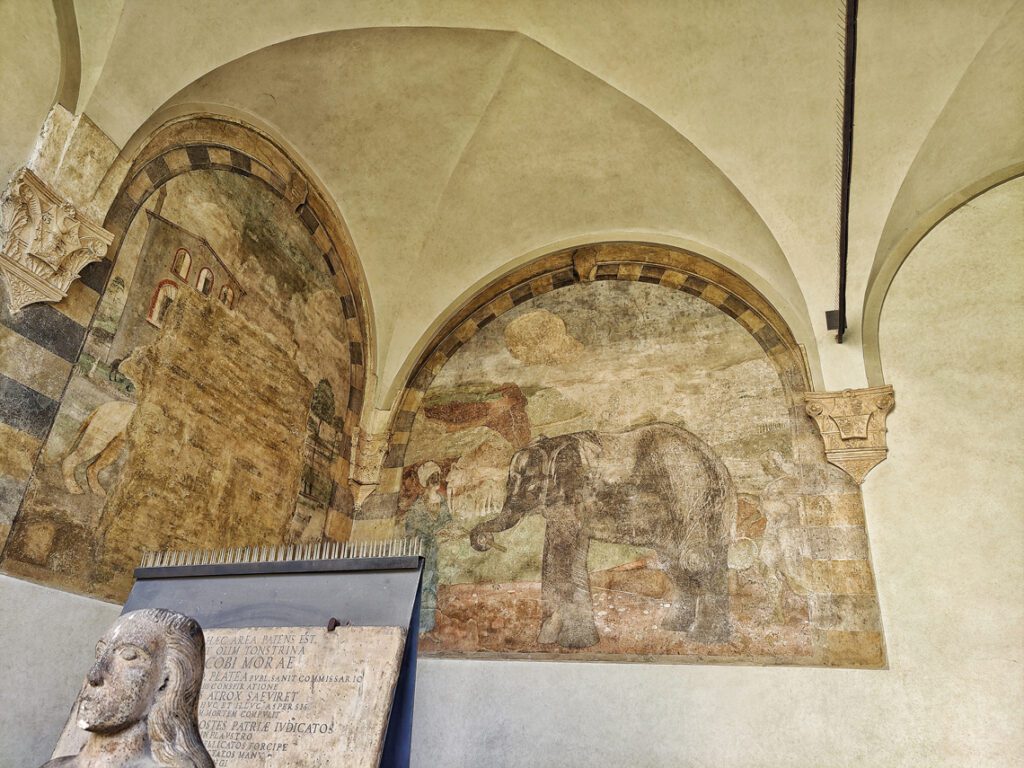
The Back Facade and the Bridge
The rear facade of the Castle overlooking Parco Sempione is considered to be the oldest one. The structure you can see on the right side is the Bridge of Ludovico il Moro (La Ponticella), built on the orders of Ludovico il Moro and is said to have been designed by Bramante.
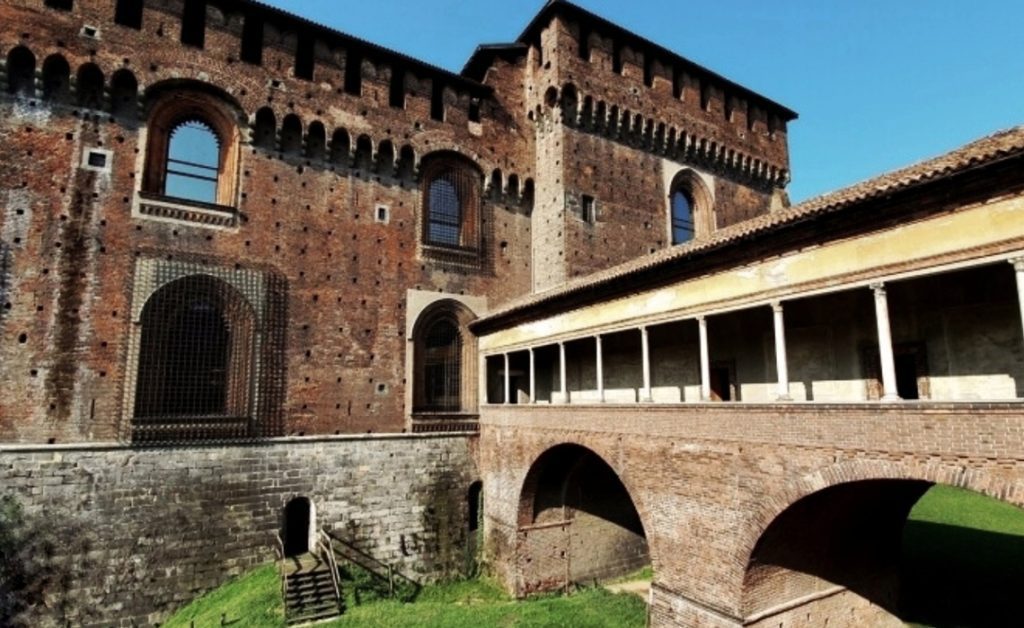
This bridge structure that once connected the apartments of the castle with the external walls that no longer exist.
Legend tells that, exactly in the little rooms of the bridge Ludovico locked himself for days mourning the death of his wife, Beatrice d’Este. That is why even today these rooms are called Black rooms (Salette nere).
The civic Aquarium
It is located inside a beautiful Art Naouveau building decorated with friezes and marine statues. Built on the occasion of the International Exhibition of Milan in 1906, it is the only structure not to have been dismantled following the exhibition.
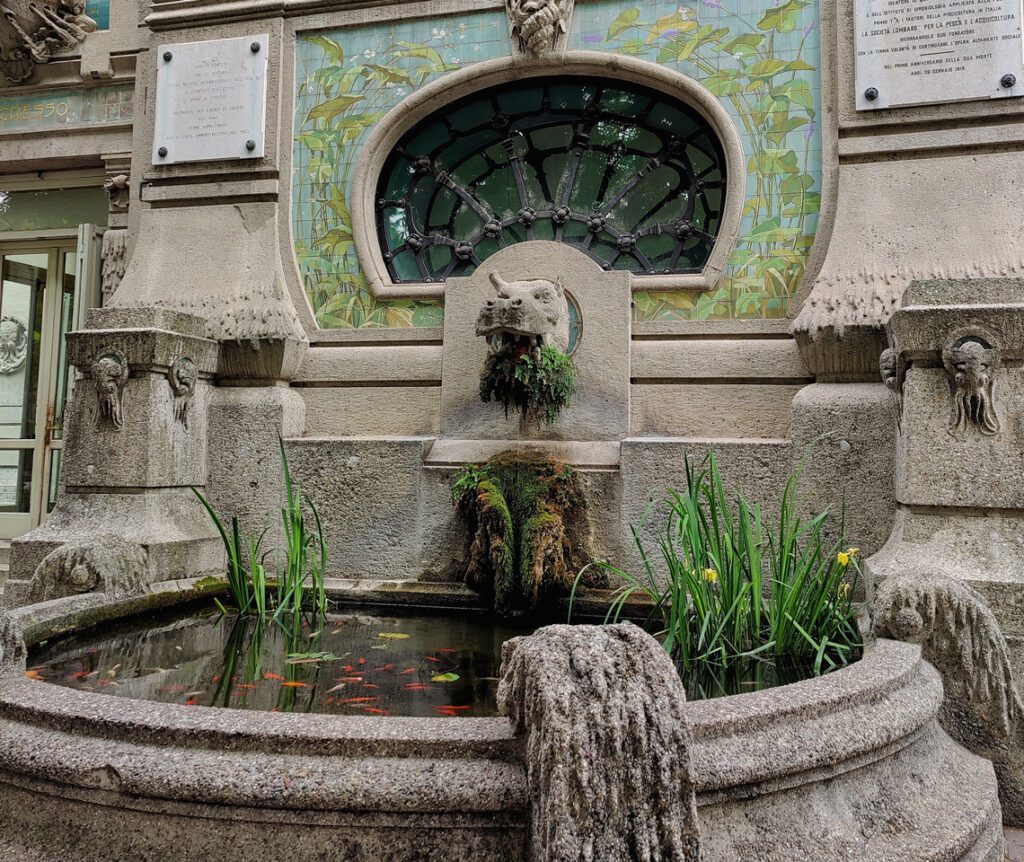
The Aquarium of Parco Sempione is the third oldest aquarium in Europe and hosts inside 38 tanks with about 100 species of fish, amphibians and living organisms in general, foremost of which are trout, chub, perch, real, pike and sturgeon. Here you can admire a faithful reconstruction of the amber waters of the Amazon with archers hunting in the typically brackish water of this area. Among the various peculiarities there is the arched tank that allows visitors to admire the fish from an unusual and very suggestive perspective.
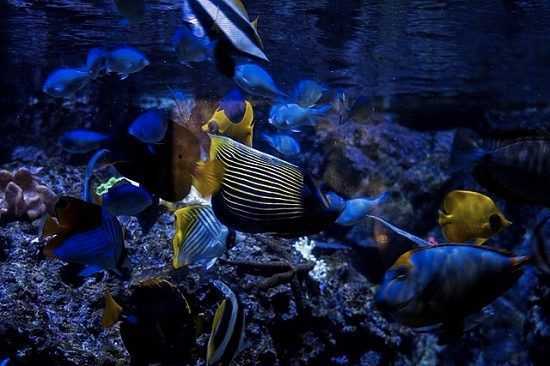
The official website
Viale G.Gadio n°2
Note: closed on Monday
Full price ticket €5.00, reduced price ticket €3.00
Torre Branca (Branca Tower)
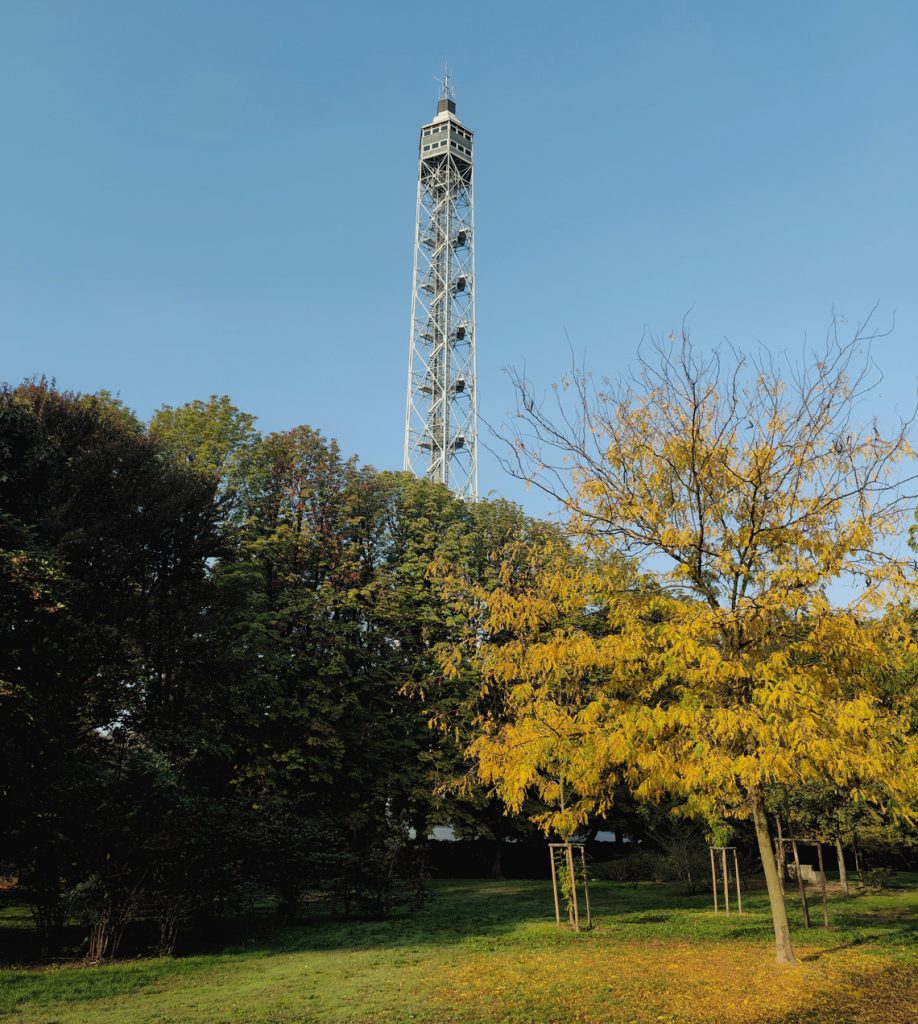
Another one must-see attraction is the Torre Branca, a slender metal structure 108 meters high built for the 1993 Triennale designed by architect Giò Ponti from which to enjoy an amazing overview on the city: Arco della Pace, Castello Sforzesco and Duomo, on clear days it is possible to see even the Alps and the Apennines. The modern lift takes you to the top in 90 seconds.
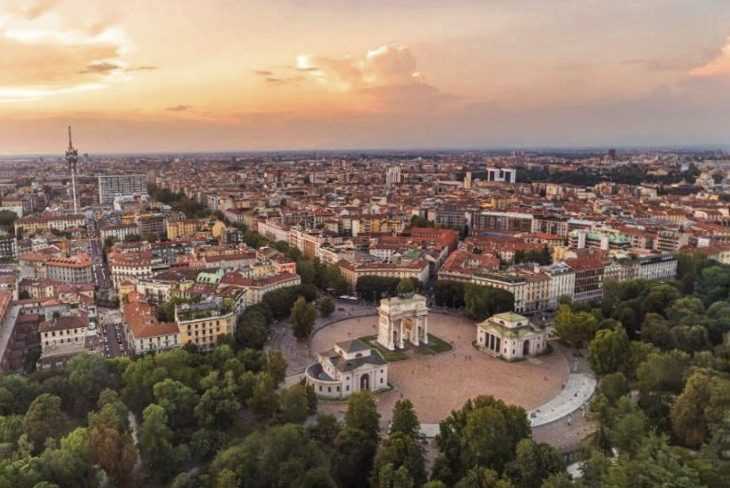
Torre Branca is located in Viale Luigi Camoens 2, inside Parco Sempione and near the Just Cavalli Club.
Climb costs 6 euro.
For info: torre@branca.it
Il Ponte delle Sirenette (The Sirene Bridge)
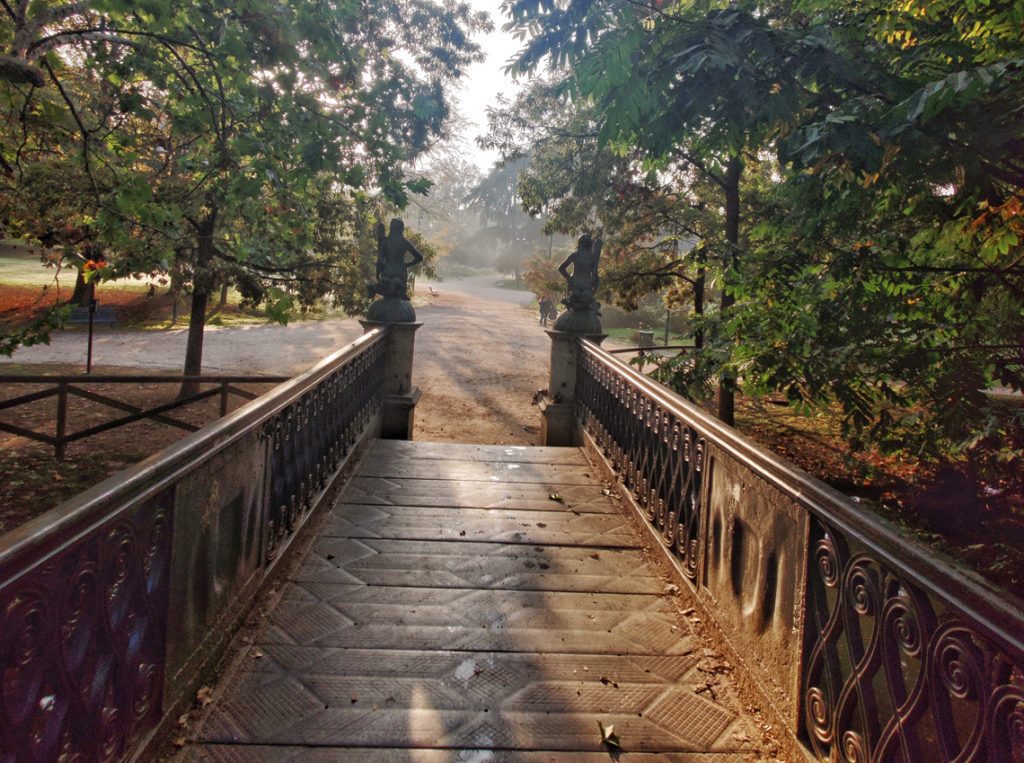
Inside the park there is one of the most romantic places of Milan: the Sirene Bridge connecting the two sides of a small lake. This elegant wrought iron structure designed by architect Francesco Tettamanzi and commissioned by private individuals is the first construction in ‘ghisa’ cast iron in Italy. The four bounding shoulders are surmounted by four sirens, all holding an oar in their own hands.
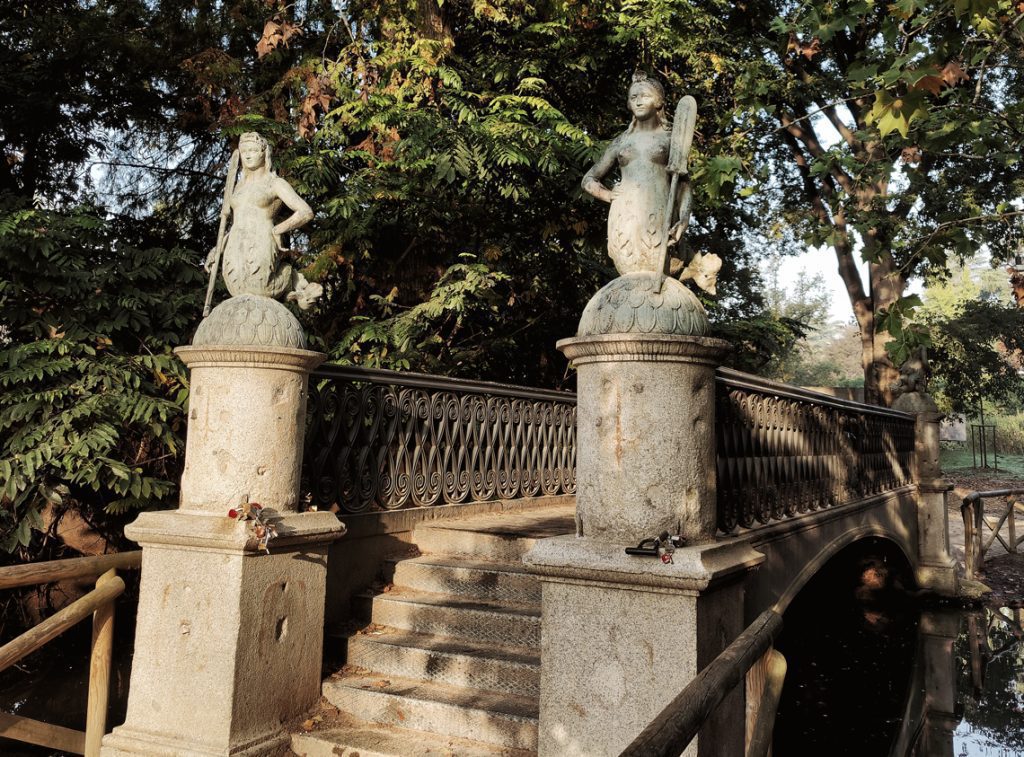
💡 Interesting to know
Originally the bridge was located in via Visconti di Modrone above the Naviglio canal, and in 1930 when the canal was buried, the bridge has been moved in Parco Sempione where it is today.
Arena Civica
Today the Civic Arena is one of the few remaining architecture structures to witness the ambitious plans of Napoleon who wanted here a grandstand for her public appearances. Nowadays the Arena is home to sporting and athletic events.
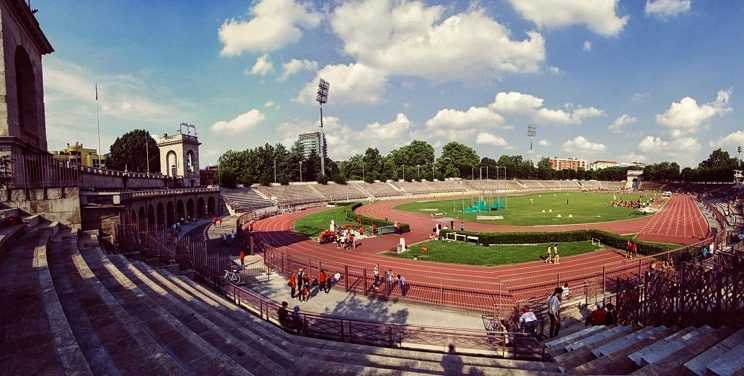
Triennale Design Museum
If you love contemporary art, you can not miss the Triennale into the setting of the Palace of the Art on the western side of the park, not far from the castle.
There are two spaces at the Triennale Design Museum:
- Teatro Agorà, designed by Italo Rota, where events, conferences and shows are held;
- Creative Set, designed by Antonio Citterio, which hosts temporary exhibitions dedicated to contemporary design which change every few months.
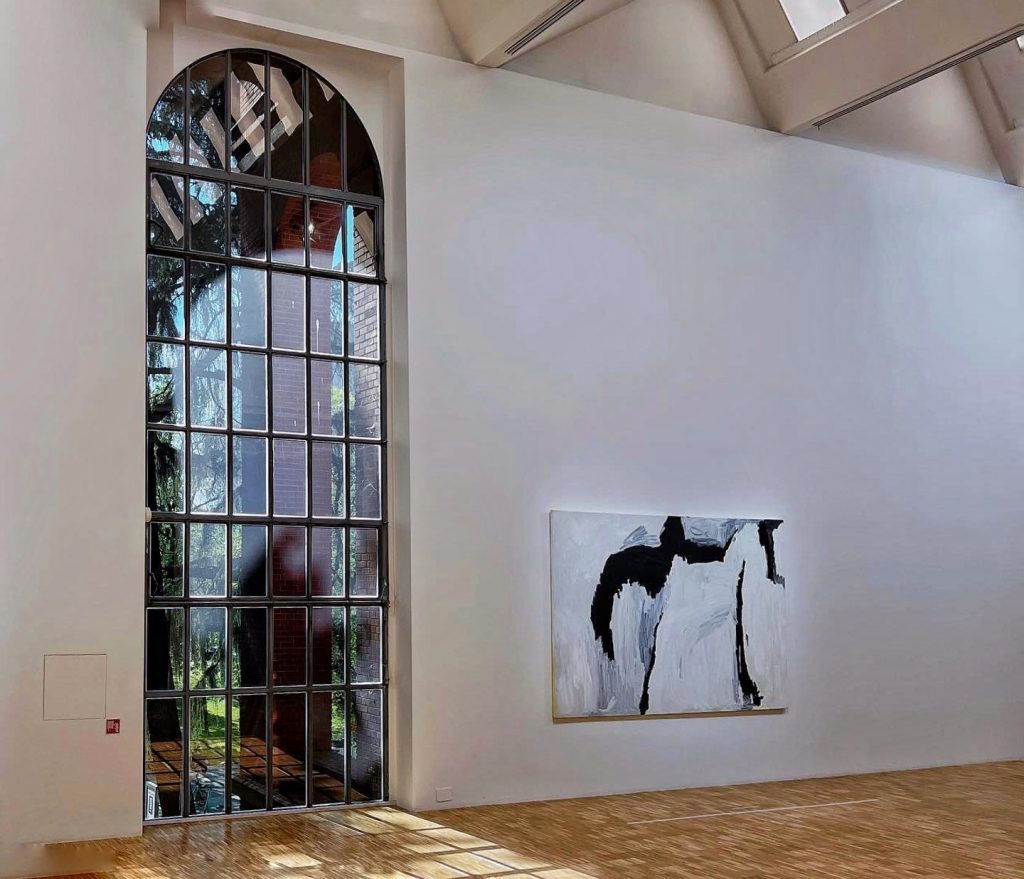
Check the museum’s official webpage to see which exhibitions are currently running.
In the garden, you find Fountain of Mysterious Baths (1973 by Chirico), designed for the 1973 Triennale.
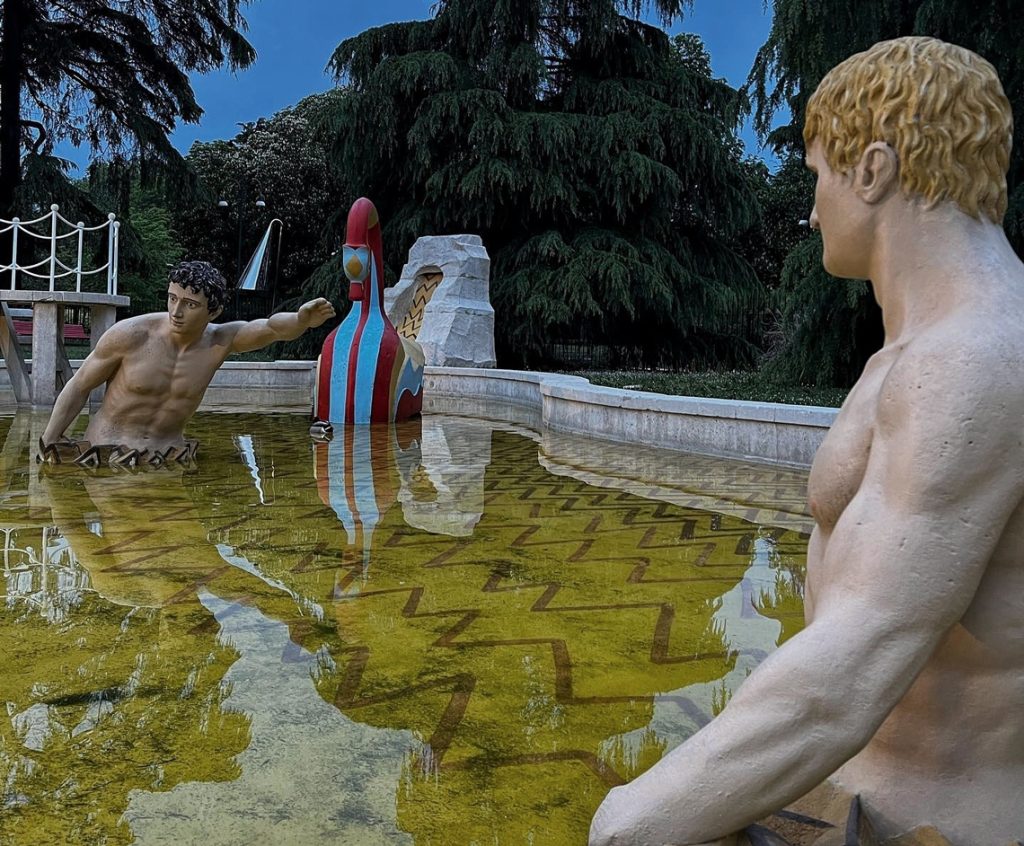 On the 2nd floor there is also a restaurant/bar with panoramic views of the park and the Porta Nuova skyscrapers.
On the 2nd floor there is also a restaurant/bar with panoramic views of the park and the Porta Nuova skyscrapers.
Viale Emilio Alemagna, 6 20121 – Milano
Arco della Pace (Arch of Peace)
Certainly at Parco Sempione you can not miss the monumental arch which catches your eye already from far away.
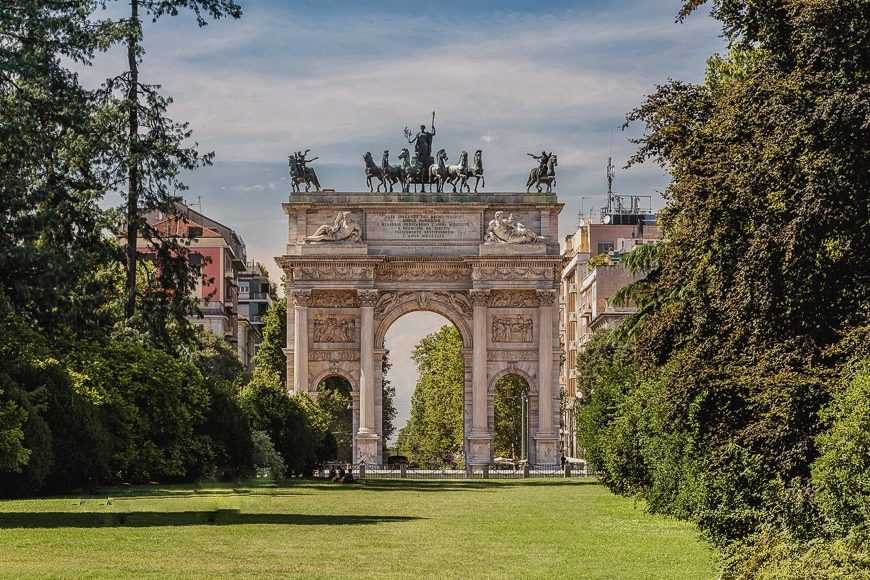
Located in Sempione Square, it is a triumphal arch dedicated to the peace of 1815 between the European nations, obtained during the Congress of Vienna.
Designed in neoclassical style, the Arch of Peace has three arches, one central and two side smaller outlined by four corinthian fluted columns.
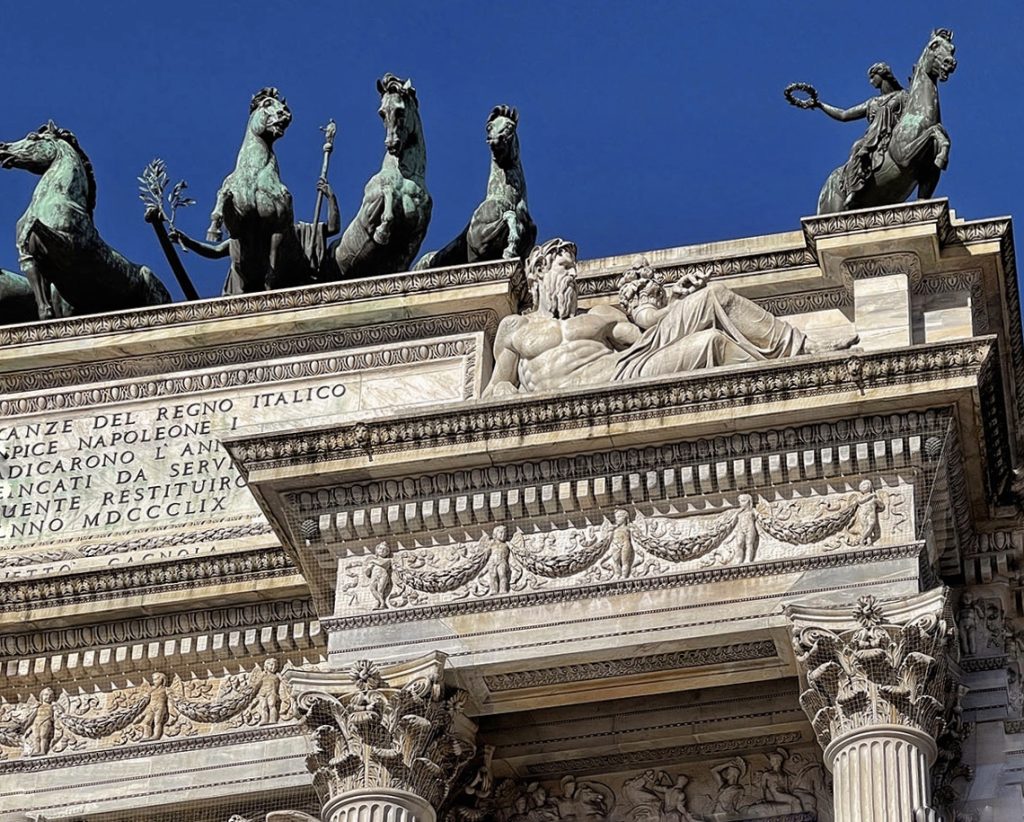
💡 good to know
The main oddity concerns the horses that draw the Chariot of Peace located above the arch. Their position, in fact, has been modified by the Hapsburgs. To mock the French after the fall of Napoleon, the horses have been turned 180 degrees in order to have their lower back oriented towards the city of Paris.
Enjoy your walking 😉









